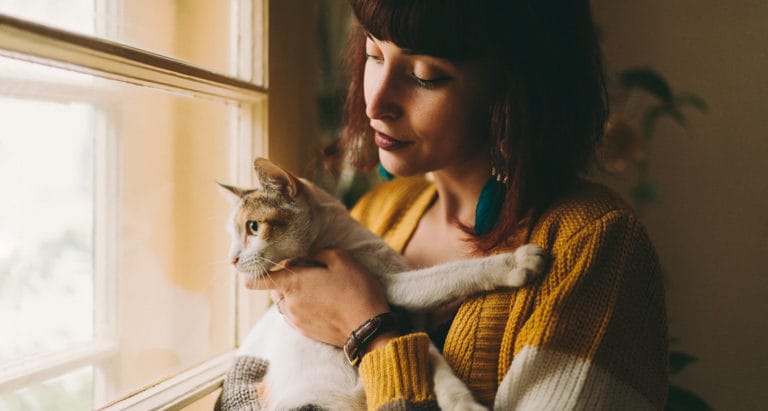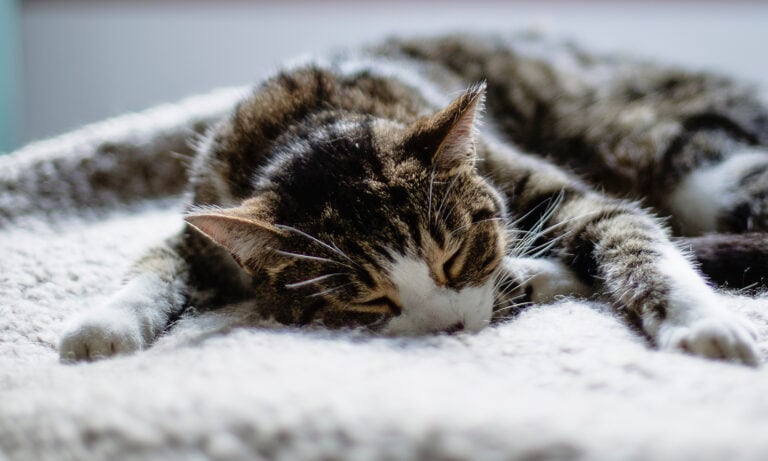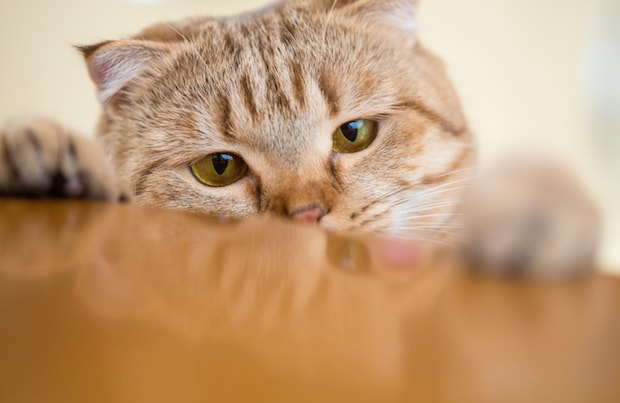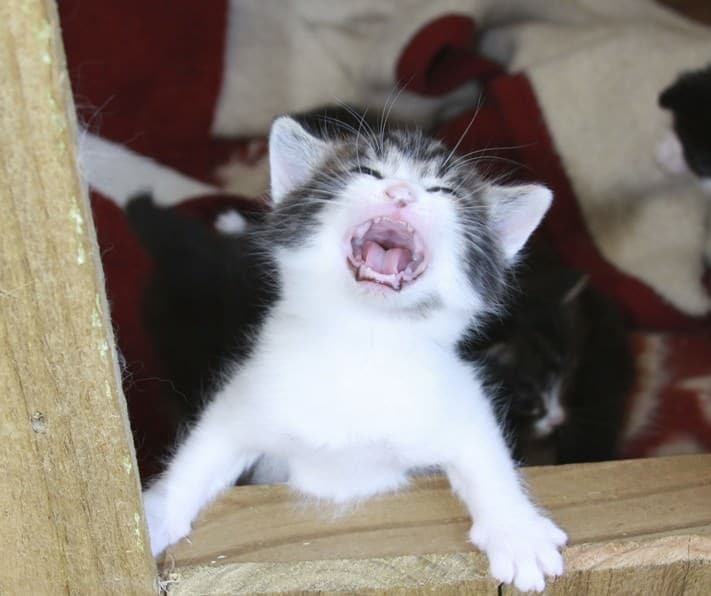When you see your cat twitching her whiskers and toes in her heated cat bed while she sleeps, it’s very likely she is revisiting that bowl of tasty cat food she had for dinner or that backyard bird expedition from earlier in the day. Cats’ sleep patterns, just like ours, involve periods of dreaming and it turns out a cat’s dreams are not random.
Dr. Nicholas Dodman, an animal behaviorist and director at Tufts University’s Cummings School of Veterinary Medicine, says that during sleep the mammalian brain needs to flush out and organize images from the day.
“All day long information is going into the brain, some of it is temporarily suspended on neurons.
“It’s like sorting at the post office …When your cat is sleeping, its brain may be closed but the brain is sorting mail into different boxes.”
Matthew Wilson, a professor of brain and cognitive sciences and associate director at MIT’s Picower Institute for Learning and Memory, says the process is somewhat similar to a director working on a film. During non-REM sleep, a slow wave or lighter sleep phrase, your cat’s brain takes pieces of images from her day and reworks or edits them to create the finished product.
“It’s like playing a video on a VCR in snippets. Memories are replayed in brief episodes, often going forward or reverse in memory,” says Wilson. “It’s an editing process with shorter sequences put together in little chunks. The content reflects experiences your cat had during his recent waking period.”
The movie watching portion of your cat’s sleep occurs during REM sleep, in which the body essentially shuts down or is paralyzed because its serotonin system is turned off.
“Serotonin’s main function is to control the large muscles that enable you to do things like back flips or throw a football,” Dodman says. “These muscles which enable you to stay upright, are limp. But fine motor control is still there. That’s why you may see your cat rotate its eyeballs or move its ears, whiskers and toes.”.
Wilson equates it to strapping a three-year-old into a car seat. “You’ve restrained him or her so they can’t express or complete movement. But the brain is still sending commands to muscles. They’re just not being listened to,” he says.
Throughout his career Wilson has studied the brain activity of rats—whose brains are similar to cats and humans—during their sleeping and waking hours. In one experiment, Wilson tracked rats while they ran through a maze as their hippocampus, the part of the brain that governs memory, was monitored with electrodes. He found that some of the patterns that their brains produced matched up with patterns observed during sleep.
“When the rat went to the left side of the maze or the right side of the maze the hippocampus recorded a pattern that it replayed during the dream state which indicated where the animal was,” explains Wilson. “We found that the hippocampus replayed sequences of spatial patterns so we can determine where the animal is dreaming of running through when it’s sleeping.”
Wilson’s research also shows that particular sequences in patterns are unique to an animal’s experience. So, if, for example, your cat experienced a particular sequence pattern of a flower, a sunset and a bear, it’s very likely it is a replay from an experience she had in her waking hours.
“If you can match patterns, then you can argue that the brain makes patterns,” says Wilson. “You might not be able to say the patterns mean anything but those things either recreate what animals already have done or predict an experience. There’s a selection process we don’t understand yet but it’s not random, some memories are selected over others.”
Short of just asking our felines about their dreams, Dodman says it’s hard to say with certainty that cats dream. But he doesn’t doubt that they do.
“Cats’ brains are similar in looks and function, both anatomically and physiologically to our brains. They also live comparable lives to ours,” says Dodman. “They’re walking around all day. They’re looking for food. They rest. They experience tiredness. We just don’t have the ability to ask. All we’re going to get is ‘meow’.”
Image: Alena Ozerova via Shutterstock

Katherine Tolford writes features that connect readers to insightful stories and topics about animals, people and culture.
Share:










